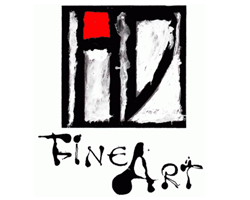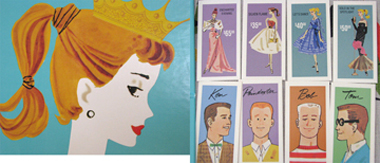Product Description
Tim Liddy, The Barbie Game (1960) Queen of the Prom, Oil and enamel on copper, plywood back 2007



TIM LIDDY (b. 1963) Kirkwood, Missouri
“The Barbie Game” (1960) Queen of the Prom 2007
Oil and enamel on copper, plywood back
Signed in script: Tim Liddy “circa 1960” 2007, red circular ring
Provenance: Kidder-Smith Gallery (Boston, MA)
H: 9 5/8” x W: 22 ¼” x D: 1 ½”
With his recent paintings, Liddy has both reasserted the construct of hyperrealist painting and developed a thoroughly unique advancement of that mode by extending the cultural reality of the indexed original. Based on the illustrated box lids of vintage board games, Liddy has recontextualized a subject, which evokes the underlying rules of life. Painted on copper or steel in the precise dimensions of the original, the metal is then manipulated to demonstrate the exact rips and tears from years of usage and includes trompe-l’oeil renditions of the scotch tape that might be holding the cardboard box together, the assorted stains, or the various graffiti of time. Liddy leaves no possibility of ambivalence, these works speak to a concurrent understanding of their original object identity and to themselves as works of art engaged in historical and psychological dialogue.
Tim Liddy, The Barbie Game (1960) Queen of the Prom, Oil and enamel on copper, plywood back 2007
You must be logged in to post a comment.
John W. Charlton opened his business in New York under the name of J.W.Charlton in 1909, later changing to Charlton & Co when Robert S. Chapin became his partner. In the 1920s, branches were open in Palm Beach and in Paris. In 1934, another partner Grant A. Peacock acquired ownership of the company, changing the name to his own. Charlton was known for creating some of the most important jewels of the Art Deco period, with an impressive client list equalling those of the biggest jewellery firms.
KOLOMAN MOSER attr. (1868-1918) Austria
PORTOIS & FIX Vienna, Austria
Secessionist center table c. 1902
Exotic wood with brass inlaid squares, brass stretcher and feet with nickel-plated sabots
Marks: No. 29378 (inventory paper label), oval metal plaque in Russian with No. 798
***This table was likely exhibited at the 1902 Moscow Exhibition of Architecture and Applied Art and that is perhaps the reason for the Russian metal plaque.
For more information see: Art in Vienna, Peter Vergo (London: Phaidon Press Ltd., 1975), p. 139, footnote 88, p. 247.
H: 29” x W: 29” x L: 42 1/4”
Price: $42,500

Reviews
There are no reviews yet, would you like to submit yours?